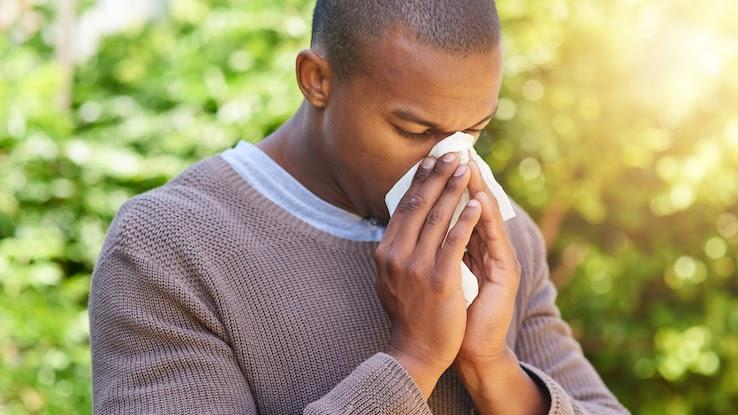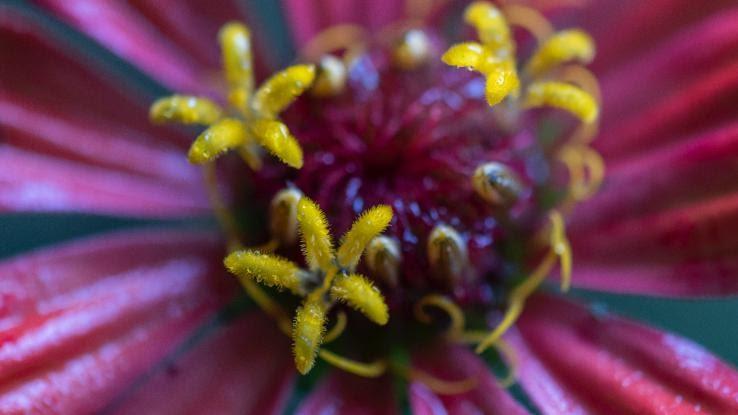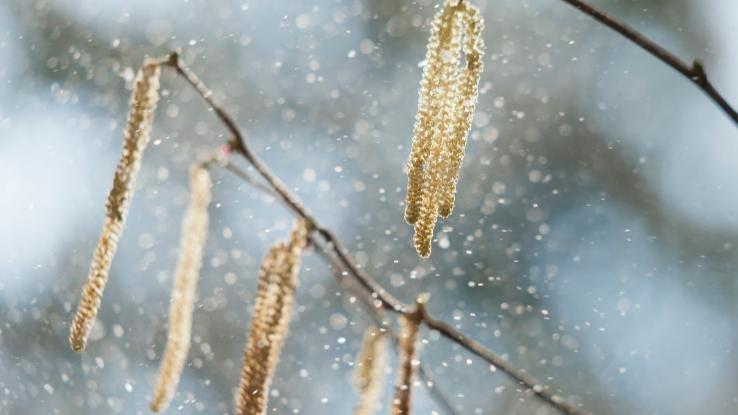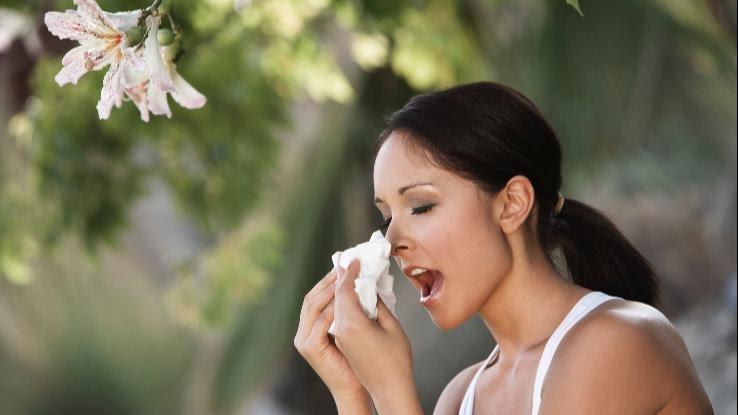
Do you experience sneezing, a congested and runny nose, watery and itchy eyes or wheezing when you’re exposed to pollen? While it might look like harmless yellow dust, it has the potential to cause a variety of uncomfortable symptoms that range from mildly irritating to downright miserable. If you experience these or other signs as the calendar slides its way into springtime, you may be one of the millions of Americans who have a pollen allergy — what many people call hay fever or allergic rhinitis.
If you have seasonal pollen allergies, you want to do everything you can to limit your symptoms and remain comfortable. One way to defend yourself against the symptoms of pollen allergies is to equip yourself with the right information to do so — to get prepared. This is easier when you keep an eye on how much pollen is in the air on those days when you’ll be out and about. One of the best ways to do this? By paying attention to the pollen count for your area. Familiarize yourself with the basics you need to know about pollen counts, including what they are, whether you can rely on them and how you can better manage your body’s response to them.
What Is Pollen, Exactly?
Pollen is a fine, dusty, often yellowish powder that various plants and trees produce. This substance is transferred from plant to plant and tree to tree by wind, animals, birds, insects and even people’s pants legs. The primary function of pollen grains is to fertilize plants of the same species that produced the grains, which are essential for the growth of plants, fruits and flowers. In this way, pollen is essential for the propagation of crops we rely on for food and the plants and trees that help ecosystems thrive. It’s considered the “male fertilizing agent of flowering plants, trees, grasses and weeds,” notes the American Academy of Allergy, Asthma & Immunology (AAAAI).

But despite the importance of pollen for plants and food production, it’s a major trigger for seasonal allergies. According to the Asthma and Allergy Foundation of America, some of the biggest culprits when it comes to allergy-inducing pollen are grasses such as ragweed, sagebrush, pigweed, lamb’s quarters and tumbleweed. Trees like birch, cedar and oak are also primary sources.
On the other hand, plants that are fertilized by insects — roses, cherry trees and pear trees, for example — are less likely to cause allergic rhinitis, which is the group of nose-related symptoms that arise when you breathe in something you’re allergic to. This is because the pollen grains of insect-fertilized plants are typically larger and stickier. They need to cling to insects’ bodies, so they’re less likely to become airborne than the pollen grains of plants that are wind pollinated and need to produce large quantities of lightweight pollen to ensure they effectively fertilize via the air.
What Is a Local Pollen Count?
As defined by the AAAAI, a pollen count is a measurement of the number of grains of pollen contained in a cubic meter of air. The higher the number of a local pollen count is, the more likely it is that someone with a pollen allergy will experience allergic rhinitis symptoms when exposed to that air. Local pollen counts are based on data collected at counting stations in real time. The AAAAI operates an Aeroellergen Network that includes a division called the National Allergy Bureau (NAB). Using volunteers, the bureau counts and tracks pollen levels at 84 counting stations in the United States. Volunteers at NAB’s stations collect, examine and count pollen spores using air-sampling devices called rotorods and other equipment, and they contribute this information to a centralized database.

Another related but different concept is a pollen forecast. This is a prediction of the amount of pollen that may appear in the air in the future. That prediction is based on historical data about past pollen counts and on regional weather forecasts. A pollen count is an actual number based on actual measurements, existing information and current conditions. A pollen forecast doesn’t incorporate actual measurements because it deals with what an estimate of what the pollen counts may look like in coming days. Some weather services, including The Weather Channel, provide pollen forecasts. The Weather Channel describes this as a “pollen breakdown” that provides a forecast of tree pollen counts, grass pollen counts and ragweed pollen counts for a rolling three-day period for whatever geographic area you select.
While a pollen forecast may be an interesting general guide, you shouldn’t totally rely on it to try and determine whether your allergies are at risk of getting triggered when you go outside. Because pollen counts are based on actual measured data about existing circumstances, they can provide a more accurate picture of what conditions are really like outside. Taking a look at both the forecast and the count can give you a more comprehensive idea of what to expect outdoors.
How Can You Monitor Local Pollen Counts?
The NAB operates 84 counting stations throughout the United States that contribute data to an online database. On its website, you can retrieve same-day (or most recently available) data from those 84 stations. While data are not available for every station every day, you can elect to see reports for every station that has data available for the date when you visit the website.

When you select a counting station and date, the NAB’s website displays data in four categories: tree pollen counts, weed pollen counts, grass pollen counts and mold. The site also states the concentration levels of pollens or molds in each category and lists the top three pollen species if it has these data available. To receive automatic notifications about pollen reports for areas you’re interested in, you can also sign up with the NAB’s Allergen Report Email Service to have reports sent to your inbox daily.
If you’re looking for real-time pollen information for your area without visiting a website or opening an email, there are apps available that provide real-time and location-specific pollen count data and forecasts. One example is the My Pollen Forecast app available in Apple’s App Store for iPhone and iPad. Keep in mind that My Pollen Forecast only provides forecast data rather than real-time counts.
When you’re examining local pollen count and forecast information, remember that allergies are usually triggered by specific plant species’ pollens, not by pollen generally. If the data you’re looking at only refer to pollen as a whole — without providing data by plant category or species — it may not give you an accurate assessment of your potential risks from exposure. Look for the most specific details available, especially if your allergic reactions can be a serious threat to your health or quality of life.
When Is Pollen at Its Worst?
The short answer is that it depends — on a few things. It depends on where you live in the United States and what particular pollens you’re allergic to. High levels of pollen of one species may not bother you at all, but high levels of another species might trigger a serious reaction. Research into the development of pollen and allergy calendars is complex.

Understanding when pollen season peaks in your geographical area is one way that pollen forecasts can help. Pollen.com offers a daily interactive National Allergy Map that provides allergen levels and pollen count information for the country, based on five gradients from low to high, including identifying the top allergens at the time.
How to Manage Your Pollen Allergy
If you have a pollen allergy and learn that a particular day or period of time will be problematic once you’ve reviewed your local pollen count, stay indoors during that time if at all possible — particularly if it’ll be warm and windy outside. However, even staying indoors may not be enough. Depending on the airflow in your home, other traffic into your home or your need to travel to work, you may need more help. The Asthma and Allergy Foundation of America offers more suggestions about reducing your chances of an allergic reaction:

Keep your windows closed
Equip HVAC systems with filters that are rated for allergens.
Take allergy medicines as directed and before a reaction occurs.
Bathe and wash your hair every day before you go to sleep.
Launder your bedding weekly using hot water.
When outside, wear sunglasses and a hat to keep pollen out of your eyes and hair as much as possible.
If you have pets that must go outside during peak pollen periods, keep your distance from them. Plan their walks for lower-count daytime hours, or ask a family member to walk them.
If you do go outside, change your clothes as soon as you go inside. Launder those clothes in hot water as soon as possible.
When drying your bedding or clothes, use your dryer at the hottest possible setting. Skip the clothesline outdoors.
Pollen allergies can range in severity from uncomfortable nuisances to strong health threats. Knowing the updated pollen count for your area can arm you with the information you need to manage your personal risks and stay healthy.
Resource Links:
https://www.aafa.org/pollen-allergy/
https://link.springer.com/article/10.1007/s10453-019-09601-2
https://www.mayoclinic.org/diseases-conditions/allergies/symptoms-causes/syc-20351497
https://acaai.org/allergies/types-allergies/pollen-allergy
https://www.aaaai.org/conditions-and-treatments/conditions-dictionary/pollen
https://www.aaaai.org/conditions-and-treatments/conditions-dictionary/pollen-counts
https://medlineplus.gov/ency/article/000813.htm
https://www.alabamaallergy.com/2018/01/25/which-plants-produce-the-most-pollen/
https://www.aaaai.org/global/nab-pollen-counts/about-the-nab





